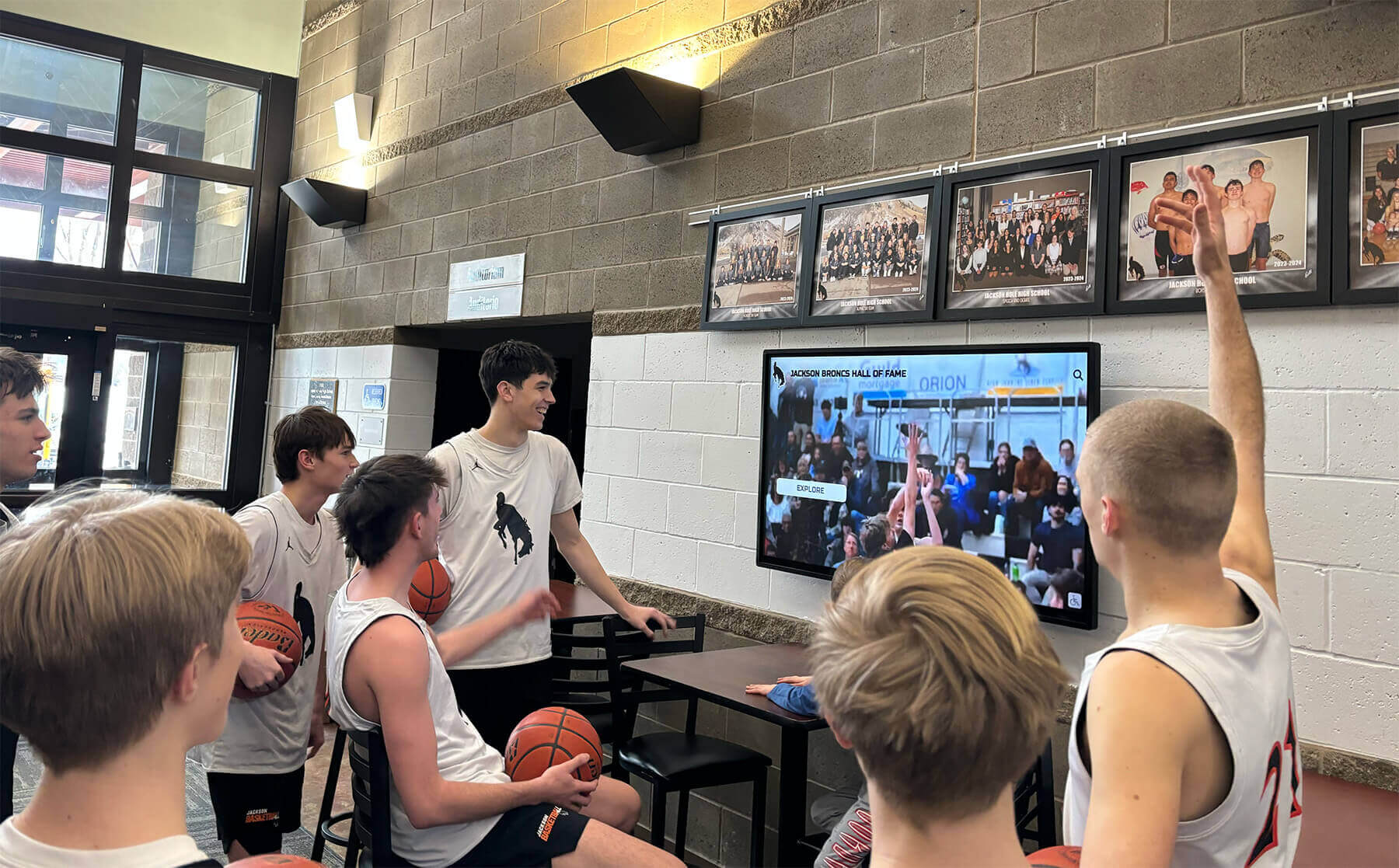Key Takeaways
Discover how to create comprehensive AAU basketball hall of fame rosters for high school programs. Learn about legendary AAU teams, recognition strategies, and modern digital displays that celebrate elite travel basketball achievements.
Understanding AAU Basketball’s Role in High School Athletics
AAU basketball represents a parallel universe of elite competition that runs alongside traditional high school seasons, providing top players with year-round development opportunities and national exposure that school programs alone cannot offer.
The Evolution of AAU Basketball
The Amateur Athletic Union basketball program traces its roots back over a century, but the modern AAU system emerged as a distinct pathway during the 1980s and 1990s, fundamentally transforming how elite high school players develop and get recruited.
Historical AAU Basketball (1920s-1960s):
During what many call the “Golden Era” from 1921 to 1968, AAU basketball featured company-sponsored teams competing at the highest amateur levels. Corporate teams like the Phillips 66ers, Peoria Caterpillars, Akron Goodyears, Denver D-C Truckers, and Wichita Vickers attracted top talent and produced numerous players who eventually reached the Basketball Hall of Fame.
Notable AAU All-Americans from this era who earned Naismith Memorial Basketball Hall of Fame induction include Roger Brown, Ace Gruenig, Richie Guerin, Chuck Hyatt, K.C. Jones, Bob Kurland, Hank Luisetti, Jack McCracken, Andy Phillip, Jim Pollard, and George Yardley.
Modern AAU Transformation (1980s-Present):
The contemporary AAU system shifted focus to youth and high school development, creating travel team structures that now dominate elite basketball recruiting. Today’s AAU programs operate through several major competitive circuits:
- Nike Elite Youth Basketball League (EYBL): Established in April 2010, EYBL is widely regarded as the gold standard, featuring marquee events like the Peach Jam championship
- Adidas 3 Stripes Select Basketball (3SSB): Nationally respected circuit known for producing college-ready and professional-level talent
- Under Armour Association (UAA): Premium circuit attracting top programs and players
- PUMA PRO16: Emerging circuit providing additional competitive pathways
According to data compiled by The Circuit, of 305 American-born NBA players aged 28-and-younger, 77.1% played on modern shoe circuits—53.4% from EYBL, 12.2% from Adidas 3SSB, and 11.5% from UAA. These statistics demonstrate AAU basketball’s profound impact on player development and professional basketball pipelines.
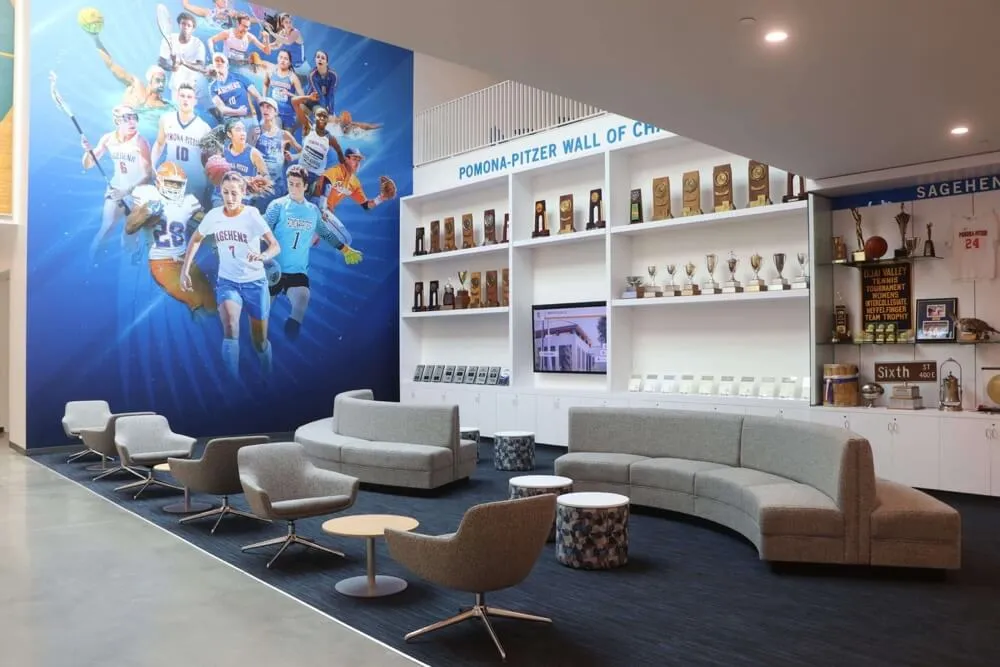
Why AAU Achievements Deserve Recognition in School Programs
High school athletic recognition programs traditionally focus exclusively on achievements during official school seasons—varsity statistics, conference championships, state tournament performances. However, this narrow scope overlooks significant athletic accomplishments many students achieve through AAU competition.
Complete Athletic Profile Recognition:
The most exceptional high school basketball players typically excel in both school and AAU settings. A player might average 20 points per game for their high school while simultaneously competing against the nation’s best players on an EYBL circuit team. Recognizing only school-season achievements tells an incomplete story of their basketball excellence.
College Recruitment Reality:
College coaches increasingly scout AAU tournaments rather than relying primarily on high school games. Major recruiting events like the Nike Peach Jam, Adidas Gauntlet Finals, and Under Armour Association championships attract hundreds of college coaches evaluating talent. For many elite players, AAU performance carries equal or greater weight in recruitment decisions compared to high school statistics.
National Competition Context:
School basketball occurs within state or regional contexts—even outstanding high school players may never face top-50 national competition during their school season. AAU circuits provide opportunities to compete against elite talent from across the country, offering entirely different levels of competition and achievement that merit recognition.
Summer Development and Dedication:
Reaching elite AAU levels requires tremendous dedication beyond school season commitments. Players attend tryouts, practices, and tournaments throughout summer months and off-season periods. This year-round commitment to basketball excellence deserves acknowledgment alongside traditional school-season honors.
Schools implementing comprehensive athletic recognition programs that include AAU achievements demonstrate they value the complete athletic journey, not just activities directly affiliated with the institution.
Legendary AAU Basketball Teams and Rosters
Understanding AAU basketball’s impact requires examining legendary teams whose rosters read like NBA draft boards, demonstrating the elite talent development occurring in travel basketball.
The Greatest AAU Teams in History
Several AAU teams achieved legendary status through exceptional rosters, dominant performances, and lasting impact on basketball culture:
1994 New Jersey Patterson AAU:
Considered by many as the greatest AAU team ever assembled, this squad featured four future NBA players and college basketball legends:
- Kobe Bryant: Five-time NBA champion, 18-time All-Star, and one of basketball’s all-time greats
- Vince Carter: Eight-time NBA All-Star known for revolutionary athleticism
- Tim Thomas: First-round NBA draft pick with 13-year professional career
- Rip Hamilton: NBA champion and three-time All-Star
This team won two AAU national championships during their peak years, showcasing a collection of talent rarely assembled at the youth level.
1995 Riverside Church:
The legendary New York program went 88-1 and won the inaugural Peach Jam championship with a roster featuring:
- Ron Artest (Metta World Peace): NBA champion and Defensive Player of the Year
- Lamar Odom: Two-time NBA champion and Sixth Man of the Year
- Elton Brand: Two-time NBA All-Star and first overall draft pick
This team dominated competition with a combination of size, skill, and New York City toughness that overwhelmed opponents.
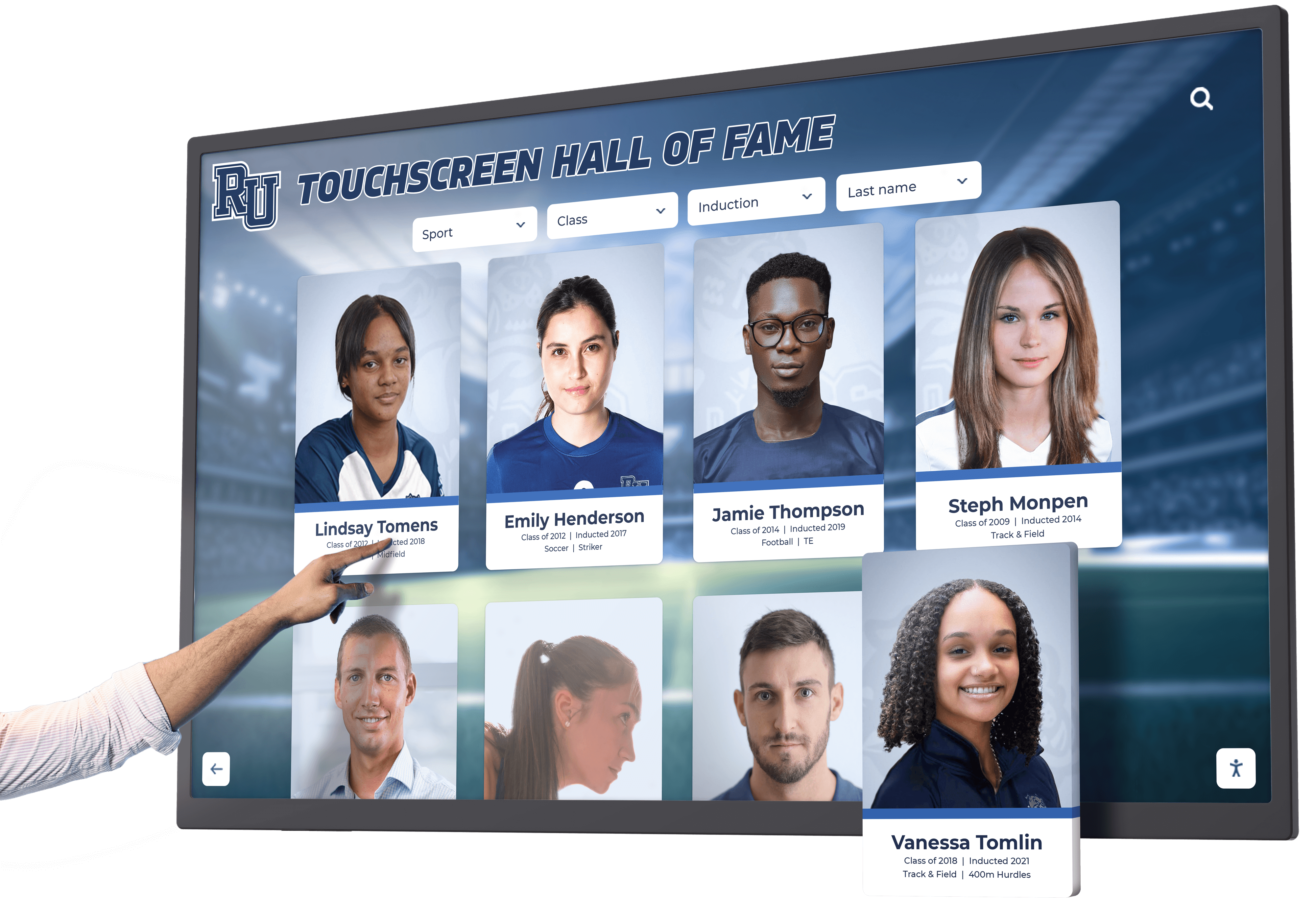
2001 DC Assault:
Touted as the 72-0 national champions in 2001, this squad featured multiple future NBA players:
- Carmelo Anthony: 10-time NBA All-Star, NCAA champion, and three-time Olympic gold medalist
- Raymond Felton: Lengthy NBA career as starting point guard
- Rashad McCants: ACC Player of the Year and NBA player
- P.J. Tucker: NBA champion known for defensive excellence
- David Noel: ACC champion and professional player
This team’s undefeated season and national championship demonstrated complete dominance across all competition levels.
2003 Atlanta Celtics:
During summer 2003, the Atlanta Celtics boasted one of history’s best AAU rosters:
- Dwight Howard: Eight-time NBA All-Star, three-time Defensive Player of the Year, and dominant center
- Josh Smith: Nine-year NBA starter known for athleticism and shot-blocking
- Randolph Morris: College standout and professional player
All three players became NBA draft picks, with Howard achieving superstar status and Hall of Fame credentials.
2019 Compton Magic:
Modern AAU excellence exemplified by a roster featuring six future NBA draft picks:
- Evan Mobley: Third overall pick, All-Rookie First Team
- Onyeka Okongwu: Lottery pick and defensive specialist
- Johnny Juzang: NBA player who starred in NCAA tournament
- Jaime Jaquez Jr: First-round pick and All-Rookie team member
- Jaylen Clark: NBA draft pick and defensive specialist
- Isaiah Mobley: Second-round pick
This team won both the Adidas Gauntlet and Adidas Summer Championship, dominating the circuit.
Notable AAU Programs Producing NBA Talent
Beyond individual legendary teams, certain AAU programs consistently produce professional basketball players year after year:
Oakland Soldiers (California):
One of the nation’s premier programs, the Soldiers have produced numerous NBA players including:
- Aaron Gordon (NBA All-Star)
- Jaylen Brown (NBA All-Star and champion)
- Ivan Rabb (NBA player)
The 2024 Oakland Soldiers featured AJ Dybantsa (number one ranked senior, projected NBA lottery pick) and Tyran Stokes (number one ranked junior), continuing the program’s elite talent pipeline.
Team Takeover (Washington, D.C.):
The D.C. metropolitan program developed numerous professional players:
- Victor Oladipo (NBA All-Star)
- Kevin Durant (multiple NBA MVP and champion—with various D.C. area programs)
- Quinn Cook (NBA champion)
MoKan Elite (Kansas/Missouri):
Midwest powerhouse producing college and professional players:
- Ben McLemore (NBA lottery pick)
- Kelly Oubre Jr. (NBA starter)
- Numerous Division I college players annually
California Supreme (California):
West Coast program featuring consistent talent development:
- Brandon Ingram (NBA All-Star)
- TJ Leaf (NBA first-round pick)
- Multiple Pac-12 and college basketball stars
These programs demonstrate sustained excellence in player development, coaching quality, and competitive opportunities that deserve recognition when their participants excel at the high school level.
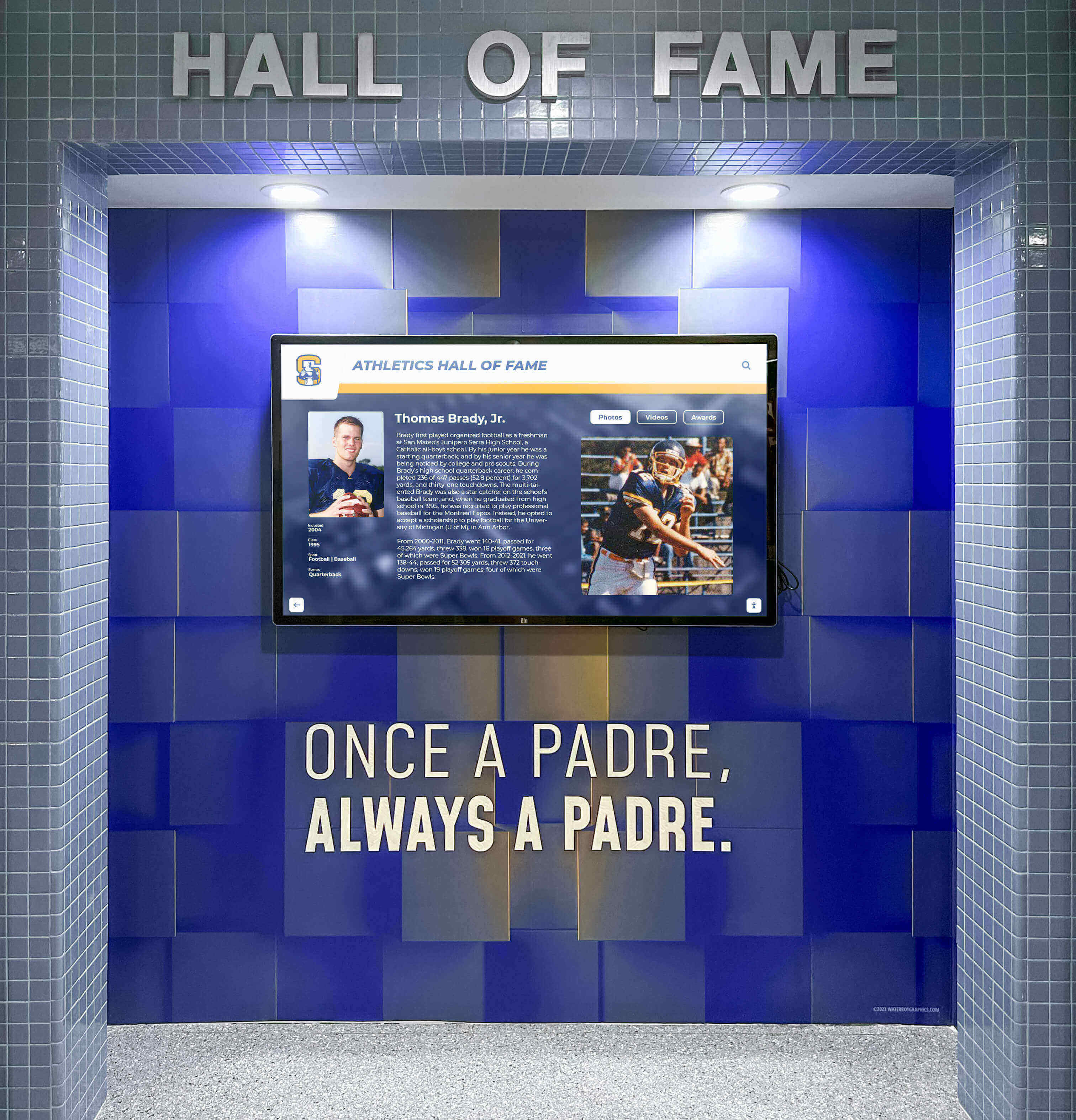
Creating High School AAU Hall of Fame Recognition Programs
Schools can implement systematic approaches to documenting and celebrating students’ elite AAU basketball participation, creating comprehensive recognition that honors complete athletic achievements.
Documenting AAU Participation and Achievements
The first challenge schools face involves systematically gathering information about students’ AAU basketball participation, which occurs outside school oversight and official record-keeping systems.
Annual Student-Athlete Surveys:
Implement end-of-season or annual surveys requesting comprehensive information about extracurricular athletic participation:
- AAU team names and locations
- Circuit participation (EYBL, 3SSB, UAA, independent)
- Tournament results and championships
- Statistical achievements and honors
- College recruitment interest generated
- Teammates who achieved notable success
Surveys should request documentation such as team rosters, tournament brackets, newspaper articles, or statistics sheets that verify participation and achievements.
Communication with AAU Programs:
Establish relationships with prominent AAU programs in your geographic area:
- Request notification when your students participate on their rosters
- Ask for season summaries and achievement information
- Obtain team photos and tournament results
- Gather statistical information if programs track comprehensive stats
- Document circuit placements and championship performances
Many AAU programs appreciate recognition from high schools and willingly share information about participating students.
Family Outreach:
Parents typically maintain comprehensive documentation of their children’s AAU participation:
- Request photos from tournaments and team events
- Gather tournament programs and brackets
- Collect newspaper clippings and online articles
- Document recruitment letters and college interest generated
- Obtain statistical summaries and achievement records
Family-provided information often includes rich detail schools wouldn’t otherwise access, creating more complete recognition profiles.
Social Media and Online Research:
AAU programs, tournaments, and media outlets extensively document elite basketball on social media and websites:
- Search team Twitter/X accounts for roster announcements and results
- Review tournament websites for brackets, standings, and statistics
- Check basketball recruiting websites tracking AAU performances
- Monitor local sports media covering regional AAU programs
- Document highlights and achievements from digital sources
This research identifies verifiable achievements worthy of hall of fame recognition.
Establishing AAU Recognition Categories
Comprehensive programs recognize diverse levels of AAU participation rather than only the most elite achievements, creating recognition frameworks that honor various accomplishments:
Elite Circuit Participation:
Highest recognition tier for students competing in premier national circuits:
- Nike EYBL Participation: Players who competed on EYBL-circuit teams
- Adidas 3SSB Participation: Students who played in Adidas circuit
- Under Armour Association: Participants in UAA competition
- Circuit Championship Teams: Members of teams winning circuit championships
- Peach Jam Participants: Players who competed in premier championship event
These achievements demonstrate elite-level competition against nationally-ranked opponents.
Regional and National Tournament Success:
Recognition for significant tournament achievements:
- AAU National Championship Participants: Students whose teams competed in national championship events
- Regional Championship Teams: Champions of regional tournaments and qualifiers
- Showcase Tournament Participation: Selection for premier showcase events
- All-Tournament Team Selections: Individual honors at major tournaments
Tournament success demonstrates sustained excellence over multiple competition days against quality opponents.
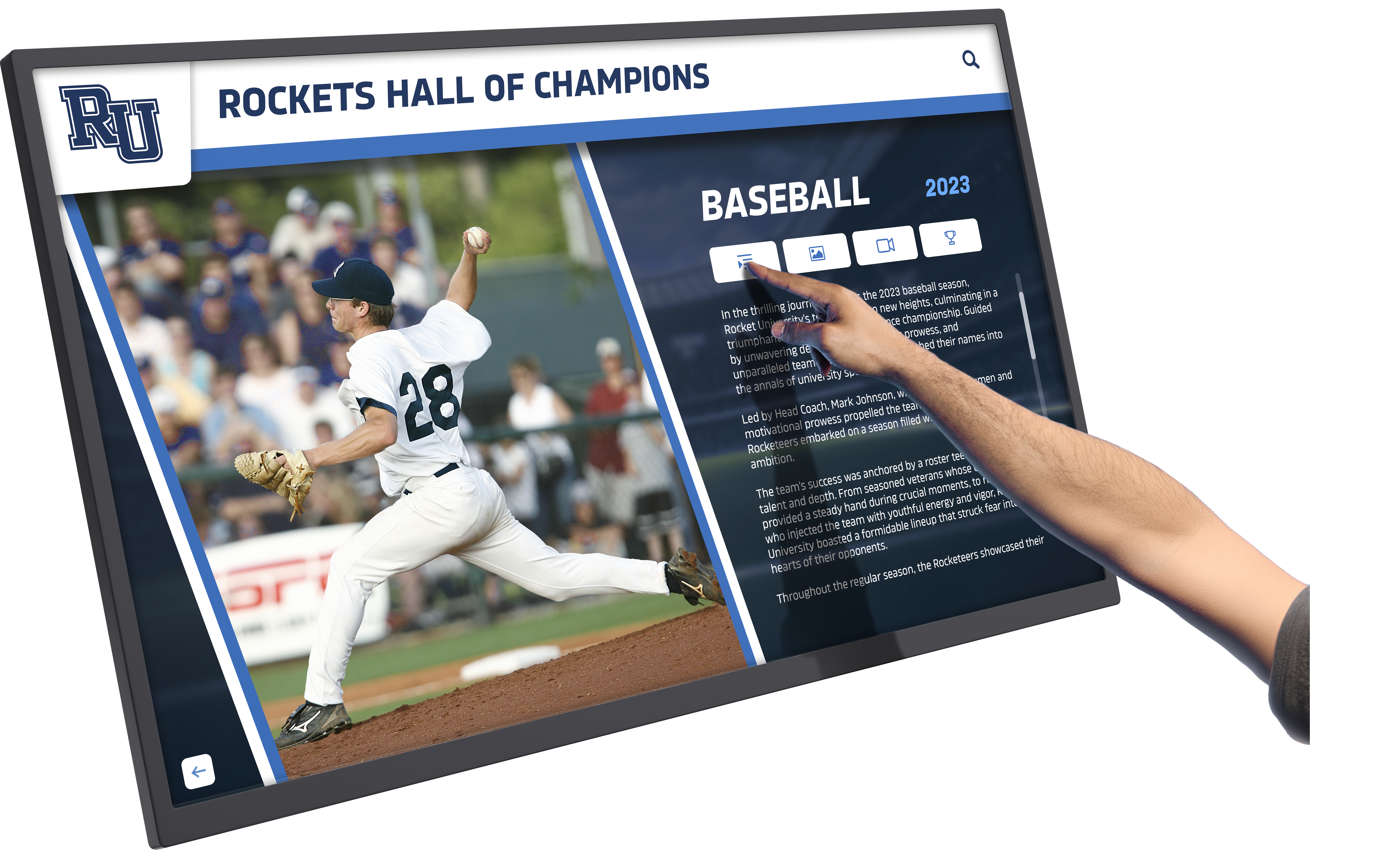
College Recruitment Achievement:
Recognition for recruitment success facilitated by AAU exposure:
- Division I Scholarship Recipients: Students earning Division I basketball scholarships
- Multiple D-I Offers: Players receiving recruitment interest from multiple D-I programs
- Major Conference Scholarships: Students signing with Power 5 or major conferences
- Professional Pathways: Alumni who played professional basketball
AAU competition significantly influences recruitment outcomes, making these achievements relevant to AAU recognition.
Program Excellence and Leadership:
Individual distinctions within AAU programs:
- Team Captains and Leaders: Leadership roles on AAU teams
- Program Award Winners: Honors like Most Valuable Player or Most Improved
- Multi-Year Participants: Sustained involvement with elite programs across multiple years
- National Rankings: Players who achieved individual national or regional rankings
These categories ensure recognition extends beyond purely statistical achievements to include character, leadership, and sustained excellence.
Integration with Traditional School Athletic Recognition
The most effective approach integrates AAU achievements within comprehensive athletic recognition rather than creating entirely separate hall of fame programs.
Unified Digital Recognition Platforms:
Modern digital athletic recognition systems accommodate unlimited content, enabling schools to include both school-season and AAU achievements in unified athlete profiles:
- Comprehensive Career Profiles: Single profiles documenting both high school and AAU careers
- Season-by-Season Documentation: School season statistics alongside summer AAU achievements
- Tournament and Game Highlights: Video and photos from both school and AAU competition
- Complete College Recruitment Story: Recognition of how both school and AAU performance contributed to recruitment success
This integrated approach celebrates complete athletic excellence rather than artificially separating school and AAU achievements.
Recognition Criteria Expansion:
Modify hall of fame selection criteria to explicitly include AAU accomplishments:
Traditional criteria might state: “Players must achieve All-Conference honors, score 1,000+ career points, or lead team to state tournament.”
Expanded criteria includes: “Players must achieve All-Conference honors, score 1,000+ career points, lead team to state tournament, compete in elite national AAU circuits (EYBL, 3SSB, UAA), or earn Division I scholarship through exceptional AAU performance.”
This explicit inclusion ensures selection committees consider complete athletic achievement.
Balanced Recognition Messaging:
Profile narratives should contextualize how school and AAU experiences combined to develop complete players:
“Marcus led Central High to three conference championships while averaging 22 points per game during his school career. During AAU seasons, he competed with the Metro Warriors in the Nike EYBL circuit, facing nationally-ranked competition and earning recognition as one of the region’s top prospects. This combination of school leadership and elite AAU competition prepared Marcus for his Division I scholarship and successful college career.”
This balanced approach honors both achievement dimensions without diminishing either.
Schools implementing best practices for student-athlete recognition create comprehensive programs celebrating complete athletic excellence, which increasingly includes significant AAU participation among top players.
Modern Digital Displays for AAU Hall of Fame Recognition
Traditional physical hall of fame displays—engraved plaques, framed photos, trophy cases—create limitations that particularly affect AAU recognition, where documentation requires more space to explain competition context that may be unfamiliar to casual viewers.
Advantages of Digital Recognition for Complex Athletic Narratives
Digital recognition platforms offer specific advantages for documenting AAU achievements that external audiences may not immediately understand:
Contextual Explanations:
Digital profiles can explain AAU basketball’s significance:
- What EYBL represents and why it matters
- The competitive level of Peach Jam or Adidas Gauntlet
- How circuit placement works and what qualifying means
- The national ranking systems and their significance
- The relationship between AAU performance and college recruitment
Physical plaques offer insufficient space for this educational context, while digital platforms accommodate detailed explanations helping viewers understand achievement significance.
Visual Documentation:
AAU achievements benefit greatly from visual documentation:
- Tournament bracket screenshots showing progression to championships
- Action photos from summer tournaments and showcase events
- Team photos with national-circuit team uniforms
- Videos of highlights against nationally-ranked opponents
- Screenshots of recruiting profiles and national rankings
- Images of college signing ceremonies resulting from AAU exposure
Solutions like Rocket Alumni Solutions provide platforms specifically designed for rich multimedia content that traditional displays cannot accommodate.
Roster and Teammate Information:
Digital systems can document notable AAU teammates, providing powerful context:
“During summer 2019, Michelle competed with the Atlanta Elite on the Adidas 3SSB circuit alongside Sarah Johnson (University of Georgia), Rachel Martinez (University of Florida), and Keisha Williams (University of Tennessee), forming one of the Southeast’s most competitive backcourts.”
This teammate documentation demonstrates elite competition level more effectively than abstract descriptions, showing that athletes competed alongside players who earned major college scholarships.
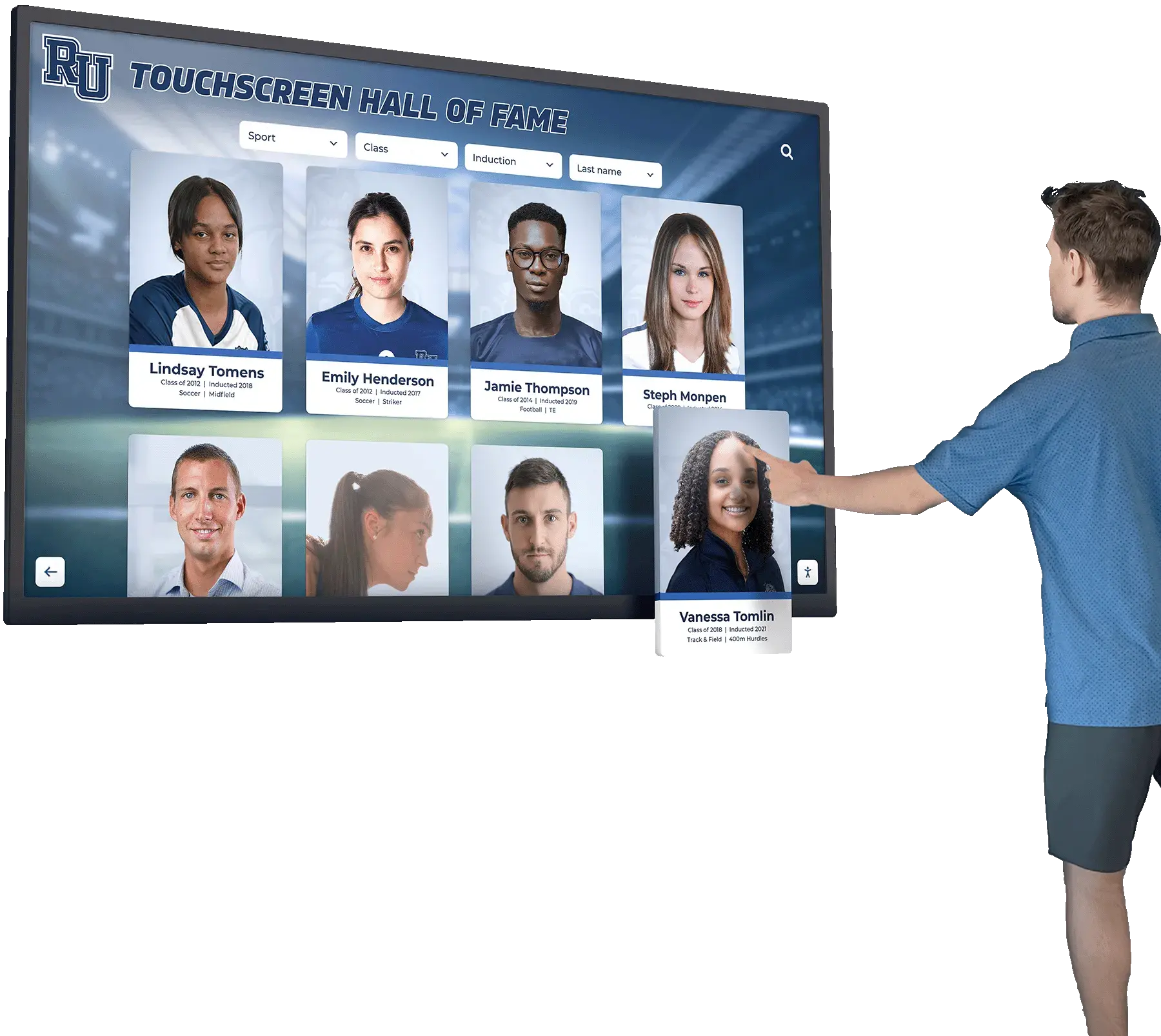
Timeline Integration:
Digital platforms excel at chronological presentation:
- Freshman Year: High school freshman season achievements + AAU program tryout and first summer with team
- Sophomore Year: School varsity accomplishments + AAU tournament participation and development
- Junior Year: School statistical leadership + AAU circuit competition and college recruitment emergence
- Senior Year: School career milestones + AAU championship season and college scholarship signing
This integrated timeline presentation shows complete development progression across both competitive contexts.
Unlimited Recognition Capacity:
Physical space constraints disappear with digital platforms. Schools can recognize:
- Every student who competed in elite AAU circuits
- Regional and local AAU achievements beyond just national-circuit participants
- Historical AAU participants from decades past once information is gathered
- Coaching connections if school coaches also coach AAU programs
- Alumni professional careers that began with AAU development
This comprehensive recognition ensures all levels of AAU participation receive appropriate celebration rather than only the most elite achievements.
Implementing AAU-Inclusive Digital Recognition Systems
Schools ready to implement comprehensive basketball recognition including AAU achievements should follow structured implementation processes:
Phase 1: Planning and Assessment (Months 1-2)
Define Recognition Scope:
Determine which AAU achievements warrant inclusion:
- Will you recognize all AAU participation or only elite circuits?
- What documentation standards will you require for verification?
- How far back historically will you research AAU participation?
- Will you include both boys’ and girls’ AAU achievements equally?
Clear scope prevents confusion and ensures consistent application.
Technology Selection:
Evaluate digital recognition platforms based on specific needs:
- User-Friendly Content Management: Can athletic staff update without IT support?
- Multimedia Support: Does the system handle photos, videos, and complex text?
- Template Systems: Are there pre-built layouts for athletic recognition?
- Cost and Support: What are total costs including hardware, software, and ongoing support?
- Track Record: Has the vendor successfully deployed similar systems in schools?
Platforms designed specifically for educational athletic recognition offer advantages over generic digital signage systems requiring extensive customization.
Budget Development:
Create realistic financial projections:
Entry-level systems typically cost $5,000-$10,000 for single displays with software, while comprehensive multi-display programs range from $15,000-$30,000. Most schools find digital systems achieve cost neutrality compared to traditional recognition within 5-7 years while providing dramatically superior capabilities.
Phase 2: Content Development (Months 2-4)
Historical Research:
Document past AAU participation systematically:
- Survey alumni about AAU teams and achievements
- Contact former coaches who may recall AAU programs
- Research newspaper archives for tournament coverage
- Review old team photos that might show AAU uniforms
- Search online databases and recruiting archives
- Contact prominent AAU programs for historical rosters
This historical foundation provides comprehensive recognition from implementation day one.
Current Student Documentation:
Establish ongoing information collection:
- Implement annual athletic achievement surveys
- Create communication channels with local AAU programs
- Develop relationships with families who can share information
- Monitor social media and recruiting websites
- Photograph students in AAU team apparel when possible
Regular documentation ensures no achievements are overlooked.
Profile Development:
Create rich, detailed athlete profiles:
- Comprehensive career narratives integrating school and AAU experiences
- Statistical achievements from both competitive contexts
- Tournament results and championship participation
- Teammate information and competition level context
- College recruitment story including AAU influence
- Professional and life achievements post-graduation
Effective athlete profile strategies create inspiring content that motivates current students while properly honoring past excellence.
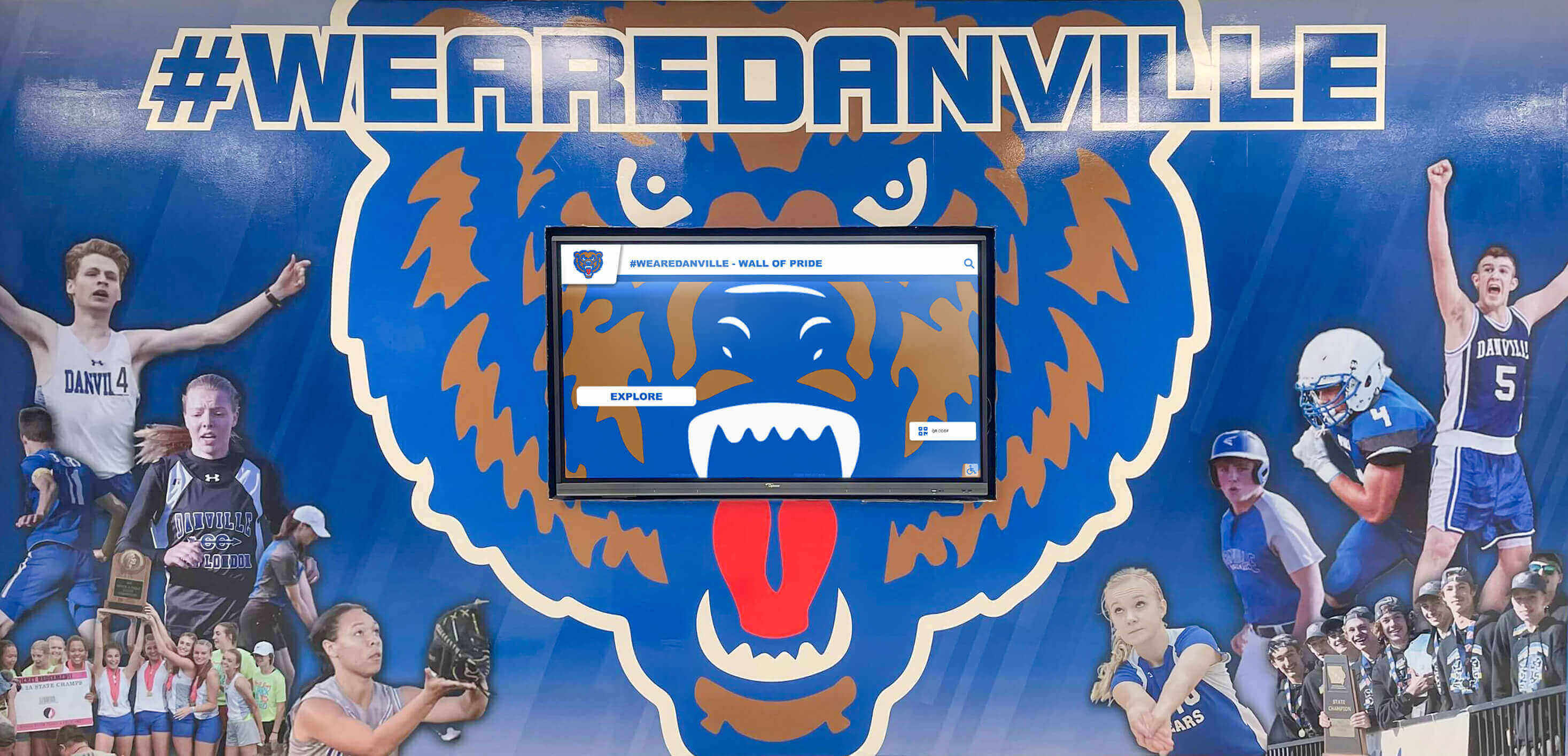
Phase 3: Installation and Launch (Months 4-6)
Strategic Display Placement:
Position displays where they maximize engagement:
- Athletic Facility Entrances: Lobby areas where athletes, families, and visitors gather
- Main Hallways: High-traffic corridors where entire school population passes
- Gymnasium Areas: Spaces where basketball context makes recognition most relevant
- College Recruiting Routes: Locations where visiting college coaches will see displays
Multiple displays expand recognition reach across campus.
Launch Event:
Create memorable unveiling ceremonies:
- Invite recognized athletes and families to campus celebration
- Feature speeches from coaches and athletic directors
- Demonstrate display functionality and content
- Generate media coverage and social media attention
- Capture photos and videos for future promotional use
Launch events establish recognition programs as significant institutional priorities.
Phase 4: Ongoing Management (Ongoing)
Regular Content Updates:
Maintain program relevance through consistent updates:
- Add new AAU participants and achievements as they occur
- Update alumni profiles with college and professional accomplishments
- Refresh featured content highlighting different athletes
- Incorporate newly discovered historical information
- Add photos and videos from recent tournaments
Regular attention prevents displays from becoming static and outdated.
Assessment and Refinement:
Evaluate program effectiveness:
- Monitor display interaction analytics if available
- Survey athletes about recognition impact
- Gather coach observations about cultural influence
- Track alumni engagement and feedback
- Measure recruitment and program pride indicators
Continuous improvement ensures recognition programs deliver maximum value over time.
Inspiring Current Athletes Through AAU Hall of Fame Recognition
Beyond honoring past excellence, AAU hall of fame recognition creates powerful motivation for current players while providing recruitment pathway education.
Demonstrating Pathways to Elite Competition
Many high school basketball players aspire to compete at college levels but lack clear understanding of the pathways successful predecessors followed to achieve recruitment success.
Visible Success Models:
When a freshman basketball player explores digital hall of fame displays and discovers:
“Marcus Thompson (‘18) led Central High to conference championships while competing with Metro Warriors in Nike EYBL. His performance in the Peach Jam tournament generated scholarship offers from six Division I programs. Marcus signed with State University, where he earned All-Conference honors and graduated with a degree in business.”
This profile accomplishes multiple objectives:
- Realistic Pathway Illustration: Shows that AAU participation contributed to recruitment success
- Timeline Understanding: Demonstrates how high school and AAU careers developed simultaneously
- Achievement Standards: Clarifies the performance level required to attract college attention
- Complete Story: Documents both athletic and academic success, reinforcing balanced excellence
Young players gain practical understanding of what successful recruitment pathways look like, making abstract aspirations concrete and achievable.
Circuit and Program Information:
Digital displays can include educational content explaining:
- What EYBL, 3SSB, and UAA circuits represent
- How AAU team tryouts work and when they occur
- What tournament events matter most for recruitment
- How to balance school and AAU commitments
- The costs involved and potential financial assistance
- Academic requirements for maintaining eligibility
This educational function helps families navigate AAU basketball’s complex landscape, particularly those without previous experience in elite travel basketball.
Local Program Connections:
Highlighting which AAU programs local athletes joined provides practical guidance:
“Central High students have competed with Metro Warriors (15 alumni), City Select (12 alumni), Regional Elite (8 alumni), and State All-Stars (6 alumni), with all four programs producing multiple Division I scholarship recipients.”
This information helps current students and families identify reputable local programs with proven track records rather than navigating hundreds of options without guidance.
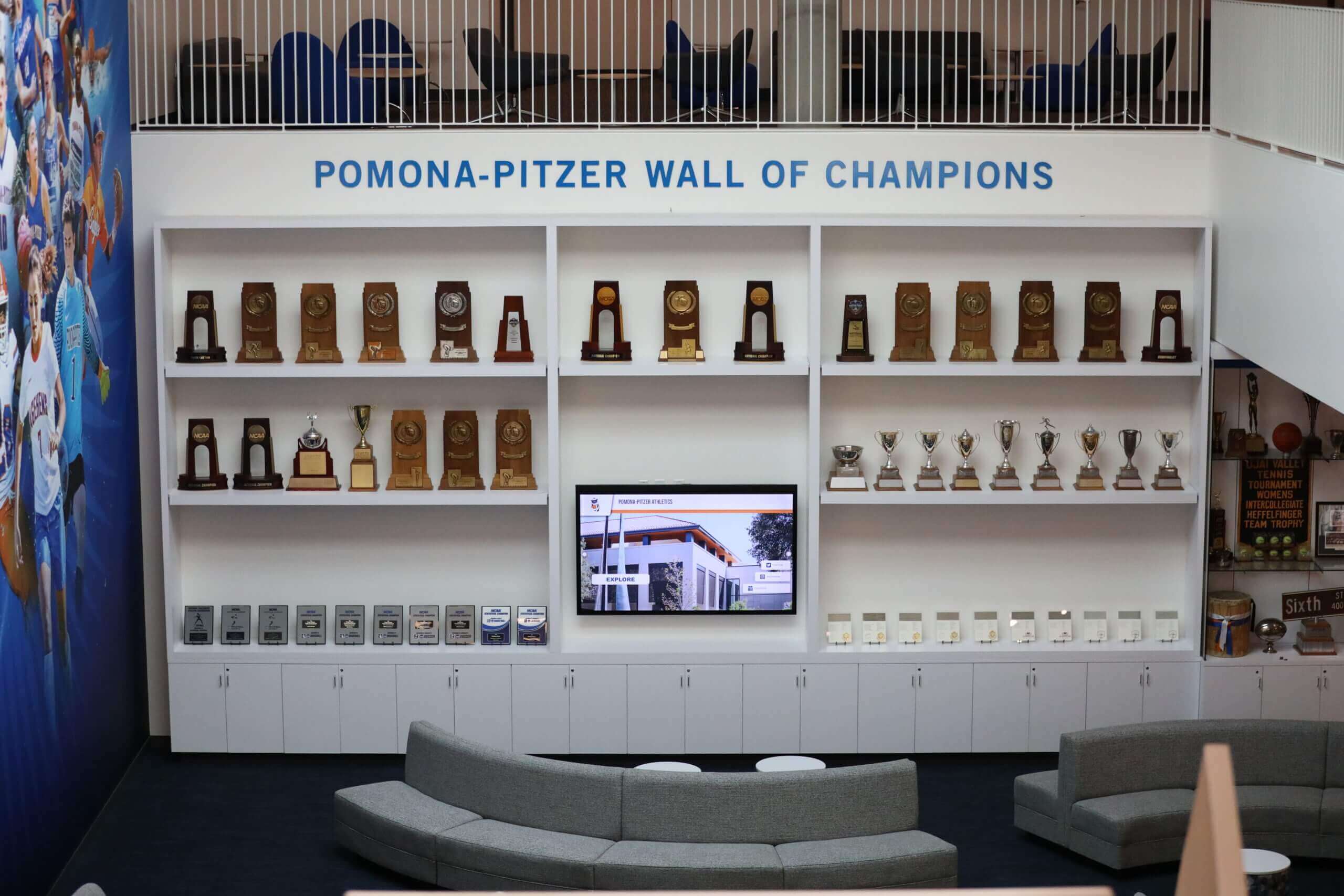
Building Program Culture Around Complete Excellence
AAU-inclusive recognition communicates that schools value comprehensive excellence rather than only activities under direct institutional control.
Holistic Development Recognition:
Programs explicitly honoring AAU achievements send important messages:
- Year-Round Dedication Matters: Excellence requires commitment beyond official school seasons
- National Competition Counts: Seeking elite competition demonstrates ambition and confidence
- Complete Development Valued: Schools celebrate comprehensive athletic journeys
- Recruitment Support: Institutions support students’ college aspirations through AAU pathways
These cultural messages shape how athletes approach their basketball development, understanding that schools recognize and celebrate complete excellence.
Alumni Connection Strengthening:
Former athletes who competed in AAU programs often maintain strong connections to their travel teams and summer basketball experiences. When schools recognize these significant chapters of their athletic journeys, alumni feel more comprehensively valued.
Many alumni support programs more actively when they see institutions honoring complete athletic narratives rather than only the portion directly affiliated with the school. This recognition demonstrates schools value students’ complete excellence, not just achievements benefiting institutional records.
Research on alumni engagement through recognition demonstrates that comprehensive celebration of complete athletic journeys strengthens lifelong connections between alumni and institutions.
Recruiting Advantage Through Comprehensive Recognition
High school basketball programs compete for talented incoming students, particularly in areas with open enrollment, school choice policies, or significant youth basketball populations evaluating high school options.
Recruitment Visit Impact:
When prospective students and families visit schools considering athletic program quality, comprehensive recognition displays communicate multiple positive messages:
Program Sophistication:
Digital displays featuring detailed AAU recognition demonstrate:
- Program leaders understand modern basketball development pathways
- Coaches and administrators value complete athletic excellence
- The institution invests in recognition technology and systems
- The school celebrates comprehensive achievement, not just school-affiliated activities
This sophistication distinguishes programs from competitors offering only traditional recognition.
Alumni Success Documentation:
Seeing numerous alumni who competed in elite AAU circuits and earned college scholarships provides powerful evidence:
- The program develops players who reach high levels
- Successful athletes chose this school and achieved their goals
- Coaching quality and player development systems work effectively
- The pathway from this program to college basketball is well-established
Tangible documentation of success outweighs verbal claims from coaches about program quality.
Culture of Excellence:
Comprehensive recognition reflecting diverse achievements—academic honors, school statistics, AAU participation, college scholarships, professional careers—communicates:
- The program expects and celebrates multiple excellence dimensions
- Athletes should pursue the highest levels of competition
- Balance between school and AAU commitments is supported
- Success means comprehensive achievement, not single-dimension dominance
This culture attracts ambitious athletes and families seeking environments that foster complete development.
Programs implementing effective athletic facility recognition gain advantages in attracting talented students who have choices about where they play high school basketball.
Integration with Other Basketball Recognition Programs
AAU recognition works most effectively when integrated within comprehensive basketball hall of fame programs recognizing diverse achievements rather than existing as isolated, separate recognition.
Comprehensive Basketball Recognition Framework
School Season Achievements:
Traditional honors remain central to basketball recognition:
- Career scoring leaders and 1,000-point scorers
- Career leaders in rebounds, assists, and other statistical categories
- All-conference, all-region, and all-state selections
- Conference and state championship team rosters
- Single-game and single-season record holders
- Team captains and leadership award winners
Programs can learn from 1,000-point scorer recognition strategies that create inspiring celebrations of school-season excellence.
AAU and Elite Competition:
Summer and travel basketball achievements complement school recognition:
- Elite circuit participation (EYBL, 3SSB, UAA)
- National tournament achievements and championships
- Showcase event selections and performances
- Notable AAU teammates and competition levels
- Recruitment generated through AAU exposure
Post-Secondary Success:
Alumni achievements demonstrate program impact beyond high school:
- College basketball participation and scholarship recipients
- College statistical achievements and honors
- Professional basketball careers (NBA, WNBA, international leagues)
- Coaching careers and contributions to basketball
- Professional success in careers outside basketball
Coaching and Program Builder Recognition:
Outstanding individuals who built programs deserve celebration:
- Head coaches’ career achievements and milestones
- Assistant coaches who developed players and advanced to head positions
- Administrators who supported and funded program development
- Community members and boosters who enabled program success
This comprehensive framework ensures all basketball achievement dimensions receive appropriate recognition without creating competitive hierarchy among different recognition types.
Multi-Sport Athletic Recognition
The most sophisticated programs integrate basketball recognition within comprehensive athletic displays celebrating excellence across all sports:
Digital platforms accommodate:
- Basketball halls of fame with school and AAU recognition
- Football recognition programs honoring gridiron excellence
- Championship celebrations across all athletic programs
- Academic athlete honors recognizing classroom excellence
- All-state athlete recognition regardless of sport
- Leadership and character awards celebrating values
Unlimited capacity prevents competition for limited space, ensuring every sport receives comprehensive recognition without compromising others.
Schools implementing athletics walls of honor create inclusive recognition celebrating diverse athletic excellence while maintaining sport-specific depth for detailed profiles.
Conclusion: Celebrating Complete Basketball Excellence
High school basketball excellence increasingly develops through both traditional school seasons and elite AAU competition. The nation’s best high school players compete in Nike EYBL, Adidas 3SSB, and Under Armour Association circuits, facing nationally-ranked opponents in showcase tournaments that generate college recruitment opportunities. Legendary AAU teams featuring future NBA stars—from the 1994 New Jersey Patterson squad with Kobe Bryant and Vince Carter to the 2019 Compton Magic with six future NBA draft picks—demonstrate elite talent development occurring in travel basketball.
For high schools seeking to comprehensively honor basketball excellence, recognition programs must evolve beyond exclusively celebrating school-season achievements to include AAU participation that increasingly defines top players’ developmental paths. Students competing in elite circuits, earning national rankings, and generating Division I recruitment interest through AAU performance deserve recognition that celebrates their complete athletic journeys.
Modern digital recognition platforms enable schools to implement comprehensive basketball halls of fame that document both school and AAU achievements in unified athlete profiles. Unlike traditional physical displays with space limitations, digital systems accommodate unlimited inductees with rich multimedia content explaining AAU competition context, showcasing tournament achievements, documenting notable teammates, and celebrating the complete pathway from high school through college and professional careers.
Beyond honoring past excellence, AAU-inclusive recognition educates current athletes about pathways successful predecessors followed to achieve recruitment goals. When younger players see detailed profiles documenting how alumni combined school leadership with elite AAU competition to earn scholarships, abstract aspirations become concrete roadmaps. This practical guidance helps families navigate AAU basketball’s complex landscape while demonstrating school support for comprehensive athletic development.
Most importantly, recognizing AAU achievements communicates that schools value complete excellence rather than only activities under direct institutional control. This holistic approach strengthens alumni connections, attracts ambitious students seeking environments that celebrate comprehensive achievement, and builds program cultures expecting year-round dedication to basketball development.
Whether implementing new recognition programs or expanding existing halls of fame, schools should embrace comprehensive approaches celebrating complete basketball excellence. Solutions like those from Rocket Alumni Solutions provide intuitive platforms specifically designed for educational athletic recognition, enabling schools to manage sophisticated recognition systems without requiring technical expertise.
Basketball’s greatest high school talents increasingly develop through both school programs and elite AAU competition. Recognition systems celebrating complete athletic journeys honor excellence comprehensively while inspiring current athletes to pursue the highest levels of basketball achievement through every available pathway.
Visit Rocket Alumni Solutions to explore how modern digital recognition platforms transform basketball achievement celebration from space-constrained physical displays into comprehensive experiences that honor complete athletic excellence—from school championships to AAU circuits to professional careers—through intuitive systems designed specifically for educational athletic recognition.
